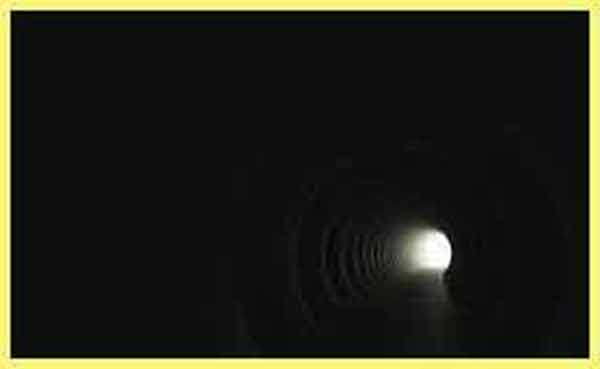THE LIGHT AT THE END OF THE TUNNEL

We would all like to see the light at the end of this pandemic tunnel sooner rather than later. But what does this "light," the world at the end of the tunnel, look like? What kind of world do we want?
Here are some questions and thoughts, both practical and spiritual, that we might consider in order to create healthier, happier lives in the future.
Distancing: The pandemic has meant, among many other things, social distancing. But we have also had to distance ourselves from what we normally do: our routines, our thinking, our assumptions and beliefs about the way things work, our whole way of being. In this weird time of confusion and chaos and uncertainty where normal life has ground to a halt, we have an opportunity to ask many questions as we consider what the future of human life might look like, and what we want to create.
We need to take stock. We need to newly assess what really matters in the long run. We need to open our eyes to what we have been devoted to as a culture and as individuals, and in the space of this strange pause, we need to consider what we will devote our energies to when it ends. . . We’ve been obsessed merely with satisfying our desire for more: more stuff, more distractions, more status, more busyness, more titillation, more whatever. Read more in ”COVID is Us,”by Philip Shepherd.
Some root questions in both the material and spiritual sense:
What really matters to us?
What do we deeply want?
What do we really need?
What is enough?
Do we have enough?
The current systems tell us we aren’t enough just as we are, and so we are driven to somehow prove ourselves worthy by external measurements. We need to ask ourselves: Who are we without our money, our possessions, our status or position? Many people have little of the above. It is no wonder many of us feel worthless and continually drive ourselves to prove ourselves worthy. From a spiritual perspective we are all of equal worth simply by the fact that we are here, and need to come back to that recognition.
We might ask ourselves, what’s truly important to me? Life being so uncertain, how can I be more present and appreciate each passing moment? What can I do from now on to more closely align my life with my true purpose, my heart’s desires? What do I value most?
”The Coronavirus Opportunity,” by Bruce Berlin, The Struggle for the Soul of America, 4/17/20.
Some questions about the future posed by Charles Eisensten.
If it keeps us safer, do we want to live in a world where human beings never congregate?
Do we want every event to be a virtual event?
Shall the concert, the sports competition, and the festival be a thing of the past?
How much are we willing to live in fear?
Shall we choose to live in a society without hugs, handshakes, and high-fives, forever more?
Shall children no longer play with other children?
Shall all human contact be mediated by computers and masks?
Is death reduction to be the standard by which to measure progress? Does human advancement mean separation?
Do we double down on protecting the separate self, or do we accept the invitation into a world where all of us are in this together? Are we to be survivalists or helpers?
Do we really need so much air travel, Disneyworld vacations, or trade shows?
What parts of the economy will we want to restore, and what parts might we choose to let go of?
Do we envision a future of electronic hall passes, a system where freedom of movement is governed by state administrators and their software at all times, permanently? Where every movement is tracked, either permitted or prohibited? And, for our protection, where information that threatens our health (as decided, again, by various authorities) is censored for our own good?
Eisenstein presents more provocative questions in his excellent essay, “The Coronation.” You can listen to “The Coronation” and read it here. Well worth your time. [It was written in March so some statistics are now outdated, but the essence of his piece is poignantly relevant.]
The bottom line question: What is life for?
A spiritual perspective: For a thoughtful and deeper look at this space we are in that is "betwixt and between," where the future is unknown, I encourage you to read the Daily Meditations of Fr. Richard Rohr of the Center for Action and Contemplation about "liminal space," beginning April 26. Topics include Between Two Worlds, The Presence of Spirit, Dark Liminality, The Liminal Paradox. "Limimal Space."
Next month's column will give us a clearer picture of what this light might actually look like in practical terms.
Back to Blog